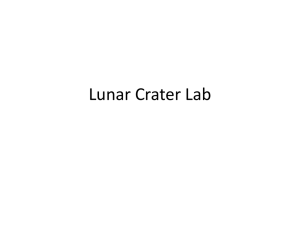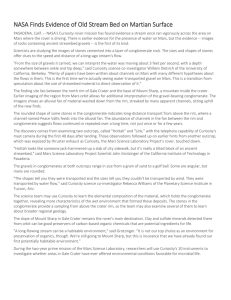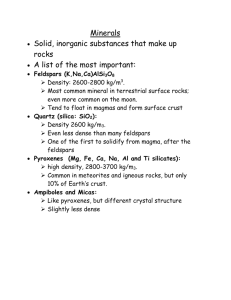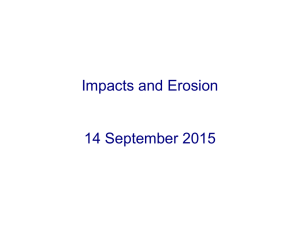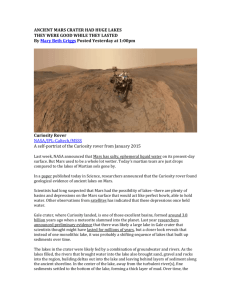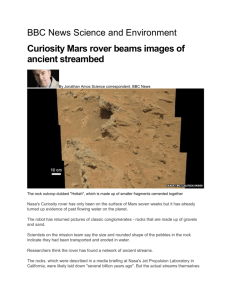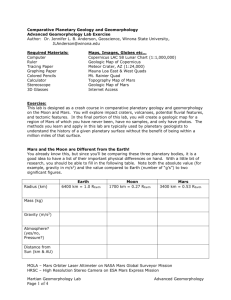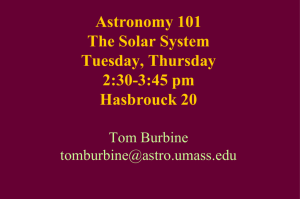Abscicon_2015_Kite_et_al_Abstract_3
advertisement
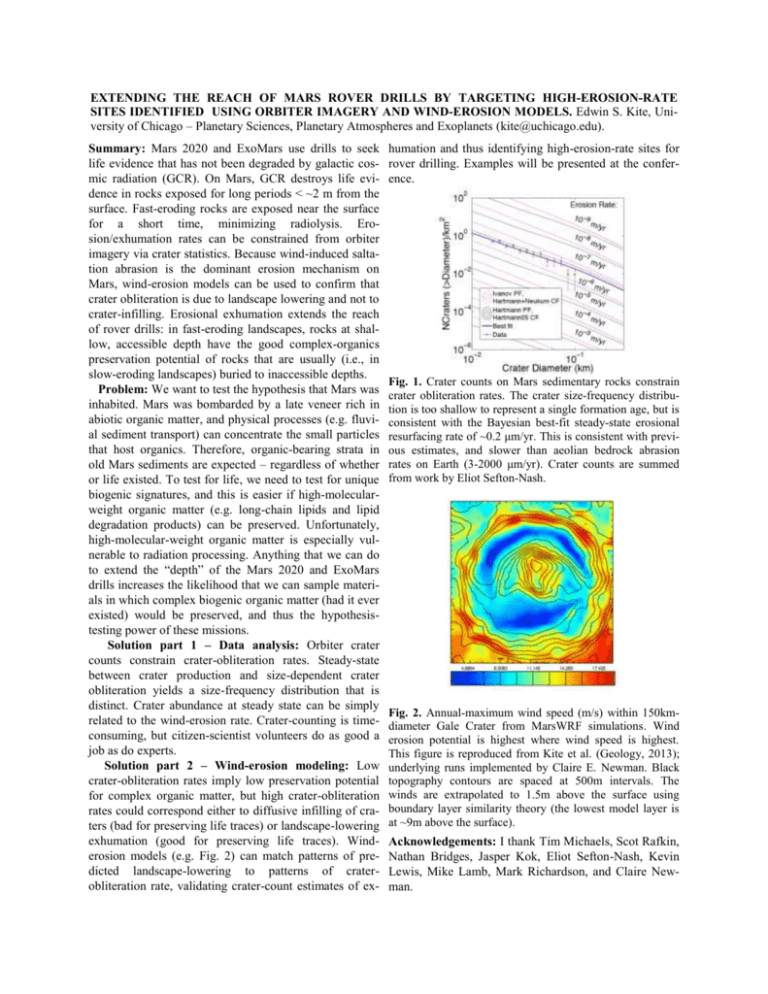
EXTENDING THE REACH OF MARS ROVER DRILLS BY TARGETING HIGH-EROSION-RATE SITES IDENTIFIED USING ORBITER IMAGERY AND WIND-EROSION MODELS. Edwin S. Kite, University of Chicago – Planetary Sciences, Planetary Atmospheres and Exoplanets (kite@uchicago.edu). Summary: Mars 2020 and ExoMars use drills to seek life evidence that has not been degraded by galactic cosmic radiation (GCR). On Mars, GCR destroys life evidence in rocks exposed for long periods < ~2 m from the surface. Fast-eroding rocks are exposed near the surface for a short time, minimizing radiolysis. Erosion/exhumation rates can be constrained from orbiter imagery via crater statistics. Because wind-induced saltation abrasion is the dominant erosion mechanism on Mars, wind-erosion models can be used to confirm that crater obliteration is due to landscape lowering and not to crater-infilling. Erosional exhumation extends the reach of rover drills: in fast-eroding landscapes, rocks at shallow, accessible depth have the good complex-organics preservation potential of rocks that are usually (i.e., in slow-eroding landscapes) buried to inaccessible depths. Problem: We want to test the hypothesis that Mars was inhabited. Mars was bombarded by a late veneer rich in abiotic organic matter, and physical processes (e.g. fluvial sediment transport) can concentrate the small particles that host organics. Therefore, organic-bearing strata in old Mars sediments are expected – regardless of whether or life existed. To test for life, we need to test for unique biogenic signatures, and this is easier if high-molecularweight organic matter (e.g. long-chain lipids and lipid degradation products) can be preserved. Unfortunately, high-molecular-weight organic matter is especially vulnerable to radiation processing. Anything that we can do to extend the “depth” of the Mars 2020 and ExoMars drills increases the likelihood that we can sample materials in which complex biogenic organic matter (had it ever existed) would be preserved, and thus the hypothesistesting power of these missions. Solution part 1 – Data analysis: Orbiter crater counts constrain crater-obliteration rates. Steady-state between crater production and size-dependent crater obliteration yields a size-frequency distribution that is distinct. Crater abundance at steady state can be simply related to the wind-erosion rate. Crater-counting is timeconsuming, but citizen-scientist volunteers do as good a job as do experts. Solution part 2 – Wind-erosion modeling: Low crater-obliteration rates imply low preservation potential for complex organic matter, but high crater-obliteration rates could correspond either to diffusive infilling of craters (bad for preserving life traces) or landscape-lowering exhumation (good for preserving life traces). Winderosion models (e.g. Fig. 2) can match patterns of predicted landscape-lowering to patterns of craterobliteration rate, validating crater-count estimates of ex- humation and thus identifying high-erosion-rate sites for rover drilling. Examples will be presented at the conference. Fig. 1. Crater counts on Mars sedimentary rocks constrain crater obliteration rates. The crater size-frequency distribution is too shallow to represent a single formation age, but is consistent with the Bayesian best-fit steady-state erosional resurfacing rate of ~0.2 μm/yr. This is consistent with previous estimates, and slower than aeolian bedrock abrasion rates on Earth (3-2000 μm/yr). Crater counts are summed from work by Eliot Sefton-Nash. Fig. 2. Annual-maximum wind speed (m/s) within 150kmdiameter Gale Crater from MarsWRF simulations. Wind erosion potential is highest where wind speed is highest. This figure is reproduced from Kite et al. (Geology, 2013); underlying runs implemented by Claire E. Newman. Black topography contours are spaced at 500m intervals. The winds are extrapolated to 1.5m above the surface using boundary layer similarity theory (the lowest model layer is at ~9m above the surface). Acknowledgements: I thank Tim Michaels, Scot Rafkin, Nathan Bridges, Jasper Kok, Eliot Sefton-Nash, Kevin Lewis, Mike Lamb, Mark Richardson, and Claire Newman.
